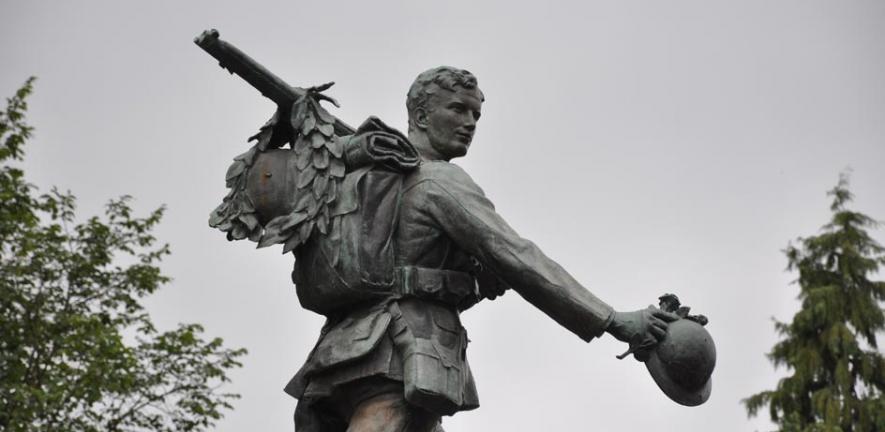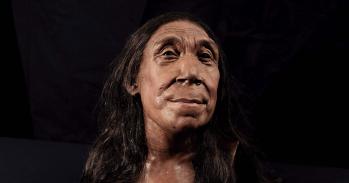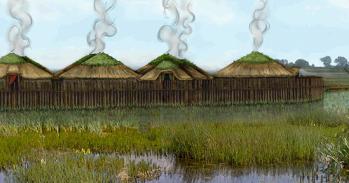
As we approach Remembrance Day, a Cambridge University project that looks at the role of memorials in conflict-torn communities is drawing to a close. By focusing on five places in Europe which have suffered losses, Cultural Heritage and the Reconstruction of Identities after Conflict (CRIC) has shown how memorials both heal and hurt.
As we approach Remembrance Day, a Cambridge University project that looks at the role of memorials in conflict-torn communities is drawing to a close. By focusing on five places in Europe which have suffered losses, Cultural Heritage and the Reconstruction of Identities after Conflict (CRIC) has shown how memorials both heal and hurt.
Memorials can heal and become part of the process of peace and reconciliation but if they are not created with the involvement of the people for whom they are most significant, they can also exacerbate existing tensions by cementing differences.
Dr Marie Louise Stig Sørensen
Remembering is part of being human: we look back just as much, or more, than we look forward. Memories are woven into every strand of our culture and our imagined world – in literature, in film and in art. How we remember and make sense of experiences linked to loss, whether personal or public, is a topic that is all too often fraught with emotion – and understandably so. When the event that is being recalled is the loss of many lives, entire communities feel the weight of sadness. Loss sustained in the context of civil war, involving two or more groups who live in close proximity and often rely on the same resources, can create a legacy of pain that can last for many generations.
For the past four years, a team of academics organised from Cambridge University’s McDonald Institute of Archaeological Research has been looking at how acts of public remembrance that interpret memories of war influence the way in which societies recover after conflict. Cultural Heritage and the Reconstruction of Identities after Conflict (CRIC) is an inter-disciplinary project that brings together European researchers working in areas such as archaeology, anthropology, history and psychology to explore post-conflict experiences in five countries across Europe – Bosnia, Cyprus, France, Germany and Spain.
CRIC is headed by Dr Marie Louise Stig Sørensen, an archaeologist with a distinguished career in the research of heritage and identity, gender and nationalism. Sørensen traces her interest in memorials back to her childhood in Denmark. “In 1864, the area I was brought up in, which is now part of southern Denmark, became part of Germany. This meant that local people, whether they were Danish or German were conscripted into the German army in the First World War. Looking at the list of names on our local war memorial I saw the names of many local families, all born within a few miles of each other, and then looked at the list of places where they had died – many thousands of miles from their home in rural Denmark. It gave me a strong sense of how war affects the local, and how it lingers on in sorrow and resentments,” she said.
“Ever since then my work has in various ways been tied up with the question of identity. Memorials can heal and become part of the process of peace and reconciliation but if they are not created with the involvement of the people for whom they are most significant, they can also exacerbate existing tensions by cementing differences. With the passing of time, memorials, like memories, are continually re-interpreted. Though outwardly they remain the same, their significance in society is shaped by changing needs.”
CRIC has focused on sectors of the population which have over the past century sustained dreadful traumas in the shape of war and civil strife, genocide and acts of retribution. However, many of the themes that the project explores are universal: the biography of places and landscapes, the narrative and symbolism of significant buildings, the creation of memorials and the marking of anniversaries.
In the UK, and British communities around the world, the chief public focus for remembrance is 11 November. Remembrance Day marks the official end of the First World War "at the 11th hour of the 11th day of the 11th month" of 1918 with the German signing of the Armistice. An estimated 703,000 British service people lost their lives fighting between 1914 and 1918 and a further 384,000 perished between 1939 and 1945. On Friday gatherings will observe two minutes’ silence at 11am which will be broken by the haunting sounds of the Last Post. On Sunday, ceremonies will take places in churches where, in many cases, reference will be made to British servicemen and women who have died in more recent conflicts – in Iraq, Afghanistan and elsewhere.
As Sørensen says: “The changing format of these events shows how memorials and anniversaries are adapted to meet new needs. Many war memorials were expected to be the last of their kind, but instead they have been gradually added to and they are now often places for remembering all wars, past and present. They have given rise to a tradition of public remembering the dead and their sacrifices, which did not exist prior to the 20th century.”
War memorials are part of the British landscape – from the grand edifices found in cities to the simplest memorials that stand in the centre of villages. In Cambridge alone, a city of 108,000 people today, there are a staggering 60 war memorials, the number swelled by memorials in many the Colleges. The best known public memorial is the statue that stands at the top of Station Road. Known as ‘The Homecoming’ it takes the form of a young man striding away from the station and is the work of Canadian sculptor Tait Mackenzie who modelled the figure on an undergraduate at Christ’s College. The memorial is due to be moved from its present position to a new square being built nearby – a decision that has led to some debate.
Although there is a sense of stern dignity about British war memorials, and a poignancy to the ceremonies linked to them, they are not immune to fierce controversy. In the wake of the First World War, the names of those who were deemed to have been ‘deserters’ (and, in some cases, shot) were not included in the rolls that honoured their peers, a decision that has since struck many of the families involved as cruel. Some were as young as 17 and were suffering from shell shock. A small number of these men have now been issued with a posthumous pardon and missing names are being gradually added to rolls of those who gave their lives.
“What’s striking is that in many instances it is the families who approach the relevant authority, such as a Cambridge college, to ask permission to have the name of a long dead relative added to the memorial for the college men. Clearly the trauma of having a family member shamed and excluded from the collective expression of the loss has been inherited within such families, showing the long-term involvement with the history of war,” says Sørensen.
Two years ago Harry Patch, the longest surviving soldier from the First World War died at the great age of 111. In his book about his experiences Patch described the war as “legalised mass murder”. Those who served in the Second World War as young men and women are now in their 80s and 90s. Many have never been able to speak fully about what they went through. Each year Remembrance Day continues to mark the terrible loss of life in these two conflicts. The way in which war memorials are venerated, and have an almost sacred status, was illustrated by the outrage expressed by the media and beyond following recent events involving young men whose thoughtless behaviour was taken to show deep disrespect for monuments built to honour the dead. One of these men got community service; the other was given a custodial sentence.
Will the British eventually let the memory of the two world wars slip from centre stage – and will the ceremonies that mark them gradually lose their significance? Is it right to hold these events up as symbols of national pride and victory, now that we live in a complex, multi-cultural society? These are difficult questions that strike right at the heart of identity – of being part of a community with shared history.
Conventional war memorials literally set in stone the concept of embattled nations, ‘sides’ and ‘enemies’. Decades after the end of the Second World War, there are no official monuments to German soldiers in Dresden, one of the places with the most problematic memorial cultures being studied by CRIC. Commemorations for the many people who died in the 1945 Allied bombing remain highly charged in the debate about how wartime loss can be recognised. A recent memorial drew such discussion. It had been erected where thousands of bodies had been cremated in public in 1945 when the city’s cemeteries could not take all the dead from the air raid.
CRIC has found that nowhere else in Germany have the memories of a war event been subject to such sustained propaganda as in Dresden - first by the Nazis just hours after the air raid, then by the East German regime organising mass rallies to rail against the West. Now decades later tens of thousands of demonstrators take to the streets of Dresden each year to protect their town’s symbolic townscape and protest against extremist groups like the neo-Nazis who come from all over Europe to use the 13 February anniversary for their own political purposes.
“The Dresden case shows that the memorial-landscape can become a battleground for conflicting interpretations of history and different claims on the future. It warns us that memorials are not just pieces of stone, they represent versions of history and they make claims about victims and heroes. Memorials can heal as well as hurt; but we have become so familiar with their presence that we don’t notice how they affect our understanding of history and therefore also ourselves,” says Sørensen.
The CRIC project will culminate in 2012. The research will be presented in a range of publications. The project has also produced a number of YouTube videos to communicate to a wider audience some of the complex histories linked to monuments and memorials in Europe. Visit the CRIC research project YouTube channel for films on European memorials and influential war heritage sites. http://www.youtube.com/user/CRICResearchProject.
This work is licensed under a Creative Commons Licence. If you use this content on your site please link back to this page.





